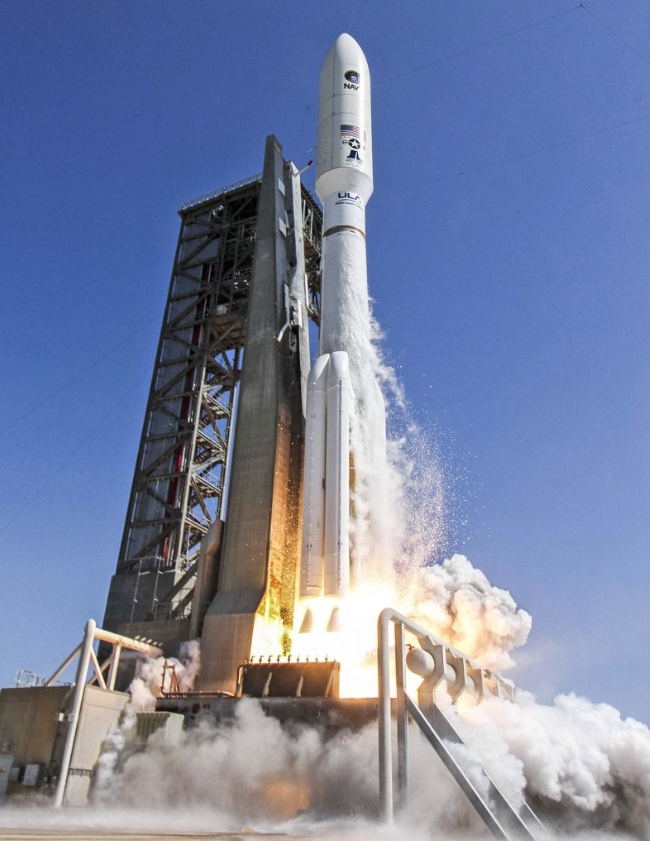
Official launch photo. Credit: United Launch Alliance
When the MUOS 5 launched successfully on June 24th there was no reason to question its successful glide into the proper orbit. The MUOS constellation of five was now complete with the successful deployment of the fifth communications satellite for the US Navy’s Mobile User Objective System (MUOS)—its object was to form a new rugged smartphone network for the US military.
The last of the $340 million spacecraft was successfully delivered into its initial orbit by a United Launch Alliance Atlas 5 rocket and was expected to boost itself into a test location 22,000 miles (35,400 km) above Hawaii by July 3, according to Steven Davis, spokesman with the Space and Naval Warfare Systems Command.
“MUOS is a revolutionary system in its infancy. Five years from now, we’ll be wondering how we ever operated without it.” said Navy Commander Peter Sheehy, principal assistant program manager of MUOS.
Laura Maginnis, United Launch Alliance vice president of Custom Services stated, “We are honored to be entrusted with delivering America’s most critical space assets to orbit and appreciate the outstanding team effort in delivering 100 percent mission success—one launch at a time.”
Unfortunately, officials said on Tuesday that a propulsion system problem has left the MUOS 5 communications satellite short of its intended orbit, resulting in a vital communications network over the Middle East, Africa and Asia without a spare.
Because the Mobile User Objective System, or MUOS, satellite was intended to serve as an on-orbit spare, there is no immediate impact to operations, Steven Davis said in a statement. On June 29 attempts to raise the satellite's orbit were halted leaving the spacecraft in a highly elliptical, rather than circular orbit. "The satellite remains in a stable intermediate orbit since experiencing the anomaly," Davis said. While the problem has been traced to a propulsion system failure other information that would be helpful such as the satellite's current altitude and what options, if any, exist for using the satellite in its present orbit or changing the orbit are not currently being shared with the public.
The MUOS-5 is the second spacecraft built by Lockheed Martin Corp. that have been unable to complete its mission goals just in the past two weeks. The other incident took place on July 25 when the military called off efforts to recover a Lockheed Martin weather satellite that had suffered a power system failure two years into its five-year design life. There were no responses from Lockheed officials when they were asked to comment.
Aerojet Rocketdyne Holdings Inc. built the satellite's onboard thrusters.
"The MUOS team is continuing to evaluate the situation, considering alternate orbit adjustment options, calculating mission impact and investigating all options before proceeding,” Davis said.
The MUOS launches placed a combined 75,000 pounds of cargo carried into space using the Atlas 5 rocket. United Launch Alliance is a partnership of Lockheed Martin and Boeing. The date and region that the satellite network serves is as follows:
MUOS 1 — Launched Feb. 24, 2012 (Pacific Ocean region)
MUOS 2 — Launched July 19, 2013 (Continental U.S.)
MUOS 3 — Launched Jan. 20, 2015 (Atlantic Ocean region)
MUOS 4 — Launched Sept. 2, 2015 (Indian Ocean region)
MUOS 5 — Launched June 24, 2016 (SPARE-Indian Ocean)
Acting as cellphone towers from their geosynchronous parking spots over the equator 22,300 miles high, the satellites together generate global coverage and end just a few miles from the poles. MUOS No. 5, the in-space spare of the system, would have been placed over the Indian Ocean.

